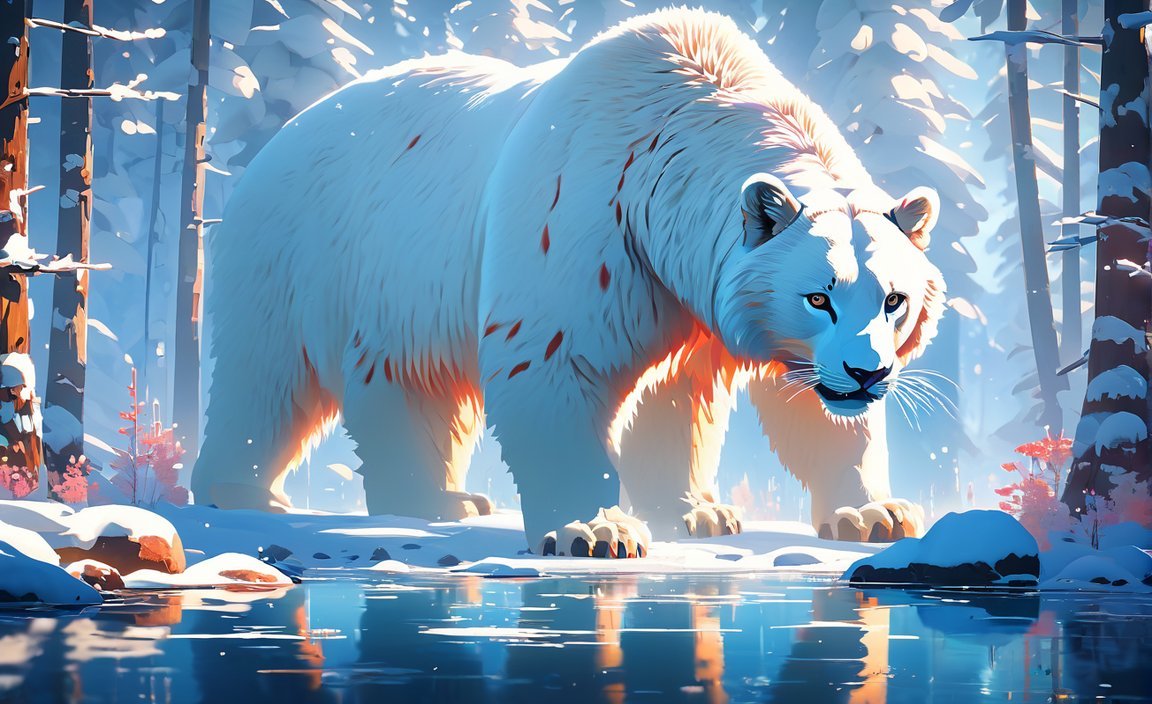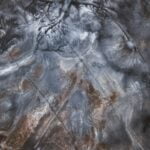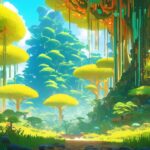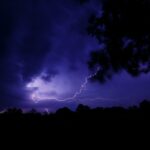The Taiga Biome, a realm of snow-dusted pines and whispering winds, might appear deceptively serene. Yet, beneath its frosty facade lies a bustling world of interconnected life, all linked together through the intricate dance of food chains. Imagine a delicate web, spun with threads of life, where each creature, from the smallest beetle to the mighty wolf, depends on another for its very survival.
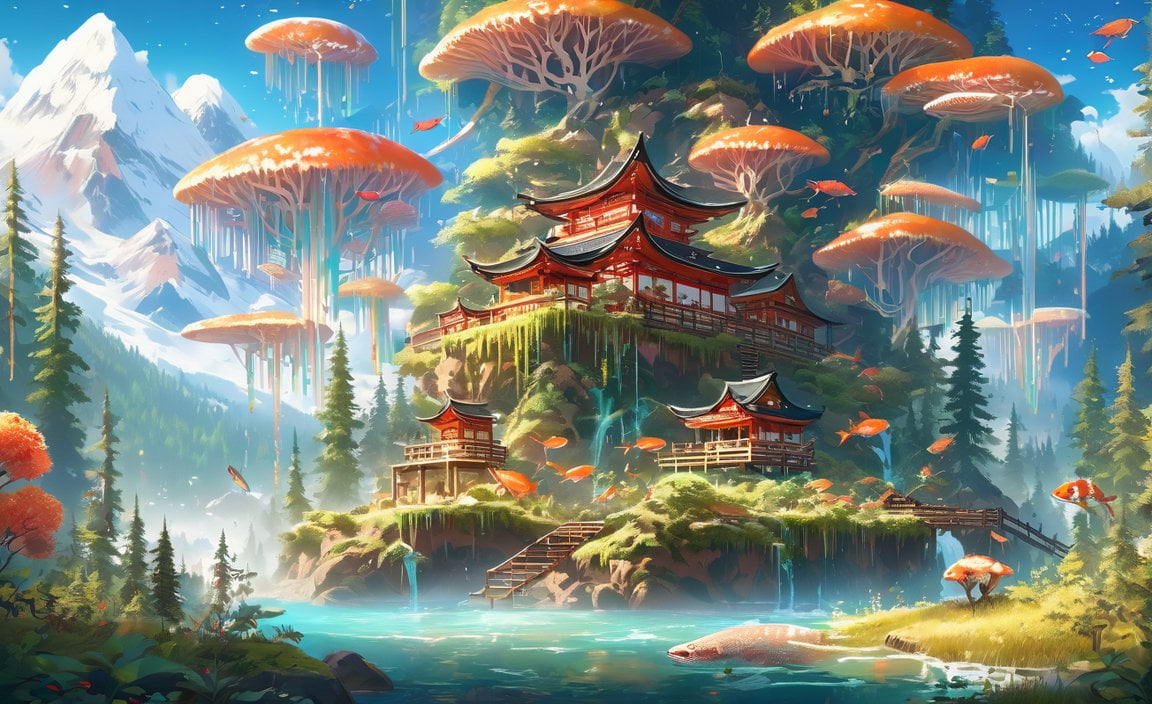
Food Chains in the Taiga Biome
At the heart of this frozen kingdom stand the conifers, those majestic evergreen trees that paint the landscape with hues of emerald and jade. These arboreal giants are the master chefs of the Taiga, harnessing sunlight to cook up food from air and water through the remarkable process of photosynthesis. They are the foundation upon which the entire ecosystem rests, providing not just sustenance, but also shelter and nesting sites for a myriad of creatures.
Venturing further into this frozen banquet, we encounter the herbivores, the plant-eaters who feast upon the conifers’ offerings. Picture a moose gracefully browsing on tender leaves, a deer delicately nibbling at shrubs, or even tiny insects diligently chewing on needles. These herbivores, in their own way, act as nature’s gardeners, carefully pruning the plant growth and converting that verdant energy into fuel for their own bodies.
But what becomes of the energy stored within these herbivores? This is where the carnivores step onto the stage, the skilled hunters of the Taiga, with their piercing gazes and lightning-fast reflexes. Stealthy foxes, sharp-eyed owls, and slithering snakes – these apex predators keep the herbivore populations in check, ensuring that no single species gains an upper hand and throws the entire ecosystem out of balance. They are the vigilant guardians of equilibrium in this frozen wilderness.
You might think this is where the story ends, but the circle of life in the Taiga is far from complete. Enter the decomposers: microscopic heroes like bacteria and fungi, the ultimate recyclers of the forest. They work tirelessly, breaking down dead plants and animals, transforming them into nutrients that seep back into the soil. These nutrients, in turn, nourish the conifers, allowing them to thrive and continue the cycle anew. It’s a beautiful, intricate dance of life, death, and renewal.
However, it’s crucial to remember that this is but a simplified glimpse into the intricate web of life in the Taiga. The reality is far more complex, with countless food chains interwoven to create a tapestry of life that scientists are still unraveling. Some experts even suggest that climate change might be disrupting these delicate balances, leading to unpredictable consequences for the Taiga’s inhabitants.
So, the next time you envision the Taiga, don’t just picture a frozen wasteland. Imagine the bustling network of life teeming beneath the surface, each creature connected to the next in an intricate dance of survival. And remember, even the smallest changes can have ripple effects throughout the entire ecosystem, highlighting the precious and interconnected nature of our planet.
Food chains in the Taiga biome are greatly impacted by water pollution, leading to devastating effects on aquatic life. To understand how water pollution affects aquatic life, click here and explore its detrimental consequences on fragile ecosystems.
Within the realm of non-metal elements, certain elements possess remarkable metallic properties that defy expectations. Discover more about this intriguing phenomenon by delving into the concept of non-metal elements with some metallic properties found in nature.
Unveiling the immense intelligence of gorillas is a captivating exploration that reveals their astonishing cognitive abilities. Embark on this fascinating journey to unravel the enigma of gorilla intelligence and gain insights into the world of these remarkably intelligent creatures.
Curiosity piqued about the scales of alligators? Wonder no more! Satiate your intrigue by diving into the question: Do alligators have scales? Find out how these reptiles are uniquely adapted and protected by their scaly armor.
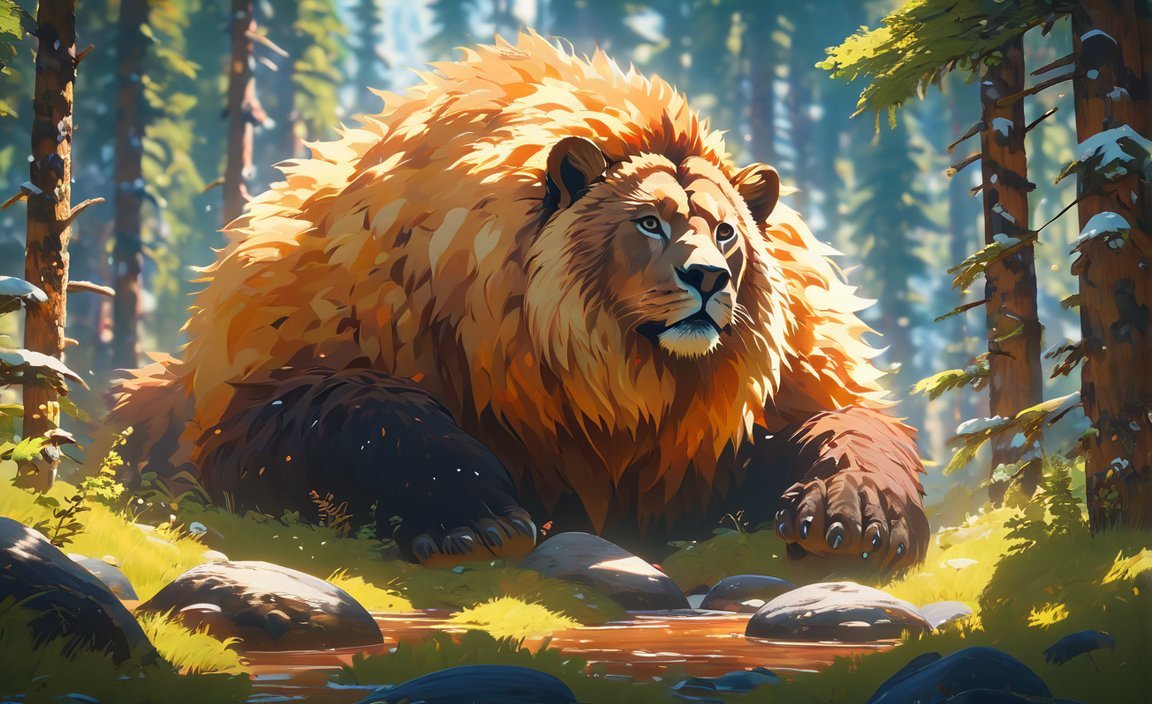
What are the food sources in the taiga?
Imagine the Taiga’s food web as a grand buffet, with each level dependent on the one below it for sustenance. At the very bottom, we find the real heroes – the producers. These are the towering coniferous trees like spruce, fir, and pine, their needle-like leaves perfectly adapted to conserve water in the dry, frigid air. Through the magic of photosynthesis, they transform sunlight into fuel, forming the very foundation of the Taiga’s food chain.
Moving up a level, we encounter the herbivores, those plant-loving creatures like moose, deer, and the ever-hopping hares. These gentle giants spend their days grazing on the producers, their feeding habits actually benefiting the entire ecosystem by keeping plant growth in check.
But life in the Taiga is not just about peaceful munching. Enter the carnivores, also known as secondary consumers. This is where things get a bit wilder. We’re talking stealthy hunters like lynx, wolves with their impressive pack mentality, and those iconic bears. These predators, with their sharp instincts and hunting prowess, maintain balance within the herbivore population.
Now, at the very peak of our food pyramid, we find the apex predators, the carnivores who eat other carnivores. Picture majestic hawks soaring above or eagles with laser-focused eyesight. These creatures sit at the top of their game, ensuring that the populations below them remain in check.
But what happens when plants and animals die in the Taiga? That’s where the often-overlooked heroes come in: the decomposers. Think of these guys as nature’s ultimate recyclers. Bacteria and fungi work tirelessly, breaking down all that dead organic matter and releasing nutrients back into the soil. And guess what? Those nutrients become food for our producers, starting the cycle anew.
While we have a good understanding of the Taiga’s food web, scientists are constantly making new discoveries. They are actively researching how factors like climate change might affect the delicate balance of this ecosystem. It’s a reminder that the Taiga, though seemingly rugged and unchanging, is a dynamic environment full of complexities we are still uncovering.
What is a food chain in a biome?
A food chain illustrates the flow of energy from one living organism to another within a specific environment, such as the Taiga. Think of it as a “who-eats-who” network.
At the bottom of the food chain are the producers. In the Taiga, these are predominantly the coniferous trees – spruce, fir, and pine. These hardy trees, with their needle-like leaves and special adaptations to withstand freezing temperatures, are masters of survival. Through photosynthesis, they convert sunlight into energy, acting much like nature’s solar panels.
Next come the herbivores, such as moose and reindeer. These gentle giants feast on the producers, converting plant energy into a form that other animals can utilize.
But no ecosystem is complete without its hunters. The carnivores – lynx and wolves, for example – are the predators of the Taiga. They rely on herbivores for sustenance, keeping their populations in check. This natural system of balance is crucial: too many herbivores would decimate the trees, leading to disastrous consequences for the entire ecosystem.
Finally, even in the frozen north, nothing goes to waste. When plants and animals die, the decomposers get to work. These often-invisible heroes – fungi and bacteria – break down the dead organic matter, returning vital nutrients back to the soil, which in turn nourishes the coniferous trees. It’s a beautiful, cyclical process of life, death, and renewal.
Key Takeaways:
- Each biome has a unique food chain, revealing the interconnectedness of life within that specific environment.
- Food chains always begin with producers, the remarkable organisms that can produce their own food.
- Next come the herbivores, followed by the carnivores, with decomposers playing a vital, often unseen, role.
- Every element is connected, and changes in one part of the food chain are likely to have cascading effects on the entire ecosystem.
Scientists are constantly making new discoveries about food chains, unveiling the intricate workings of nature.
What are 5 producers in the taiga?
The taiga, with its frigid temperatures and snow-covered landscapes, presents a formidable challenge to life. Yet, life finds a way, and it all starts with the producers. These incredible organisms possess the ability to harness sunlight and transform it into food, setting the stage for the entire ecosystem.
The most iconic producers in the taiga are the coniferous trees – spruce, fir, and pine. These evergreen giants, with their needle-like leaves specially designed to withstand cold and conserve water, are the cornerstone of the taiga. They remain green year-round, absorbing sunlight and converting it into energy through photosynthesis. Without them, the taiga would be a vastly different, and much emptier, place.
But the producers of the taiga are not limited to towering trees. Don’t overlook the contributions of mosses, lichens, and shrubs. These often-overlooked plants, though less imposing than the conifers, are just as vital to the ecosystem. They typically grow close to the ground, creating a lush carpet of green and contributing to the biodiversity of this remarkable biome. They are, in essence, the unsung heroes of the taiga buffet.
Research suggests that climate change might be impacting the delicate balance of producers in the taiga. Warmer temperatures could favor certain species over others, potentially altering the entire food web. It’s a stark reminder that even in the seemingly harsh and unchanging environment of the taiga, life is interconnected and delicately balanced.
Scientists continue to make new discoveries about the producers of the taiga, revealing their resilience and the crucial role they play in sustaining life in this challenging biome.
What are some food chains in the boreal forest?
The boreal forest, also known as the taiga, is a tapestry of interconnected life, with each species playing a crucial role in the delicate balance of the ecosystem. Let’s explore some of the fascinating food chains that weave together this vibrant biome:
The Circle of Life: From Sun to Soil
The foundation of the food chain in the boreal forest lies not with an animal, but with the trees themselves. Conifers, such as spruce, fir, and pine, are the true stars of the show. They possess the remarkable ability to harness energy from sunlight and convert it into a usable form through photosynthesis. These towering trees, with their needle-like leaves and resilient bark, use this energy to grow tall and strong, providing both food and shelter for a multitude of creatures.
Munching on the Menu: The Plant-Eaters
Next on the scene are the herbivores, the plant-eaters of the boreal forest. These gentle giants feast upon the bounty provided by the trees. Picture the iconic moose, lumbering through the woods and snacking on twigs and bark. Or consider the reindeer, also known as caribou, with their impressive antlers, grazing on lichens and shrubs. And let’s not forget the snowshoe hares, masters of camouflage, nibbling on leaves and buds. These herbivores are essential because they convert the energy stored within plants into a form that carnivores, the meat-eaters, can utilize.
At the Top of the Food Chain: Hunters on the Prowl
Now we delve into the realm of the predators. These carnivores are the skilled hunters of the boreal forest, relying on herbivores for their sustenance. The grey wolf, a symbol of the wild, often leads the pack, using its keen senses and remarkable teamwork to bring down prey such as deer and elk. The lynx, a stealthy feline with tufted ears and incredible agility, is perfectly adapted for hunting snowshoe hares. And then there are the owls, those silent nighttime predators with sharp talons and even sharper eyesight, swooping down on unsuspecting voles and mice. These predators might appear ruthless, but they are essential for keeping herbivore populations in check and maintaining the delicate balance of the ecosystem.
Nature’s Recycling Crew: The Decomposers
The story doesn’t end with the predators. There’s another crucial group to consider – the decomposers. These often-overlooked organisms, such as fungi and bacteria, play a vital role in the boreal forest. They are nature’s ultimate recyclers, breaking down dead plants and animals and returning essential nutrients back to the soil. These nutrients, in turn, nourish the trees, allowing them to grow even stronger, perpetuating the cycle of life.
A Peek into a Complex Web
It’s essential to remember that these examples represent just a simplified glimpse into the intricate network of food chains within the boreal forest. The reality is far more complex, more akin to a spiderweb with its countless interconnected threads. Numerous other organisms, from insects to birds to fish, play a part in this intricate dance of life. Scientists are continuously uncovering new insights into the workings of these ecosystems.
So, the next time you think about the boreal forest, remember that it’s not just a collection of trees and animals. It’s a living, breathing testament to the interconnectedness of all living things. Every species, from the tiniest microbe to the largest predator, has a role to play in this delicate balance.
What is the food chain of the taiga?
The taiga, that vast and chilly forest stretching across the northern hemisphere, might seem like a desolate and unforgiving place. However, beneath its icy exterior lies a complex and fascinating food chain, a delicate web of life where every organism plays a vital role.
At the very base of this food chain are the producers – primarily coniferous trees. These evergreen giants, with their needle-like leaves and adaptations for surviving harsh winters, act like nature’s solar panels, converting sunlight into food through photosynthesis. They are the backbone of the entire ecosystem.
Next come the herbivores, the plant-eaters. Imagine moose gracefully stripping leaves from branches, deer nibbling on tender shoots, and tiny voles and squirrels stuffing their cheeks with seeds and berries. These creatures act as intermediaries, converting the energy stored in plants into a form that other animals can use.
Now we enter the domain of the carnivores, the meat-eaters. Stealthy lynx, cunning wolves, and powerful bears roam the taiga, relying on their hunting skills to capture prey and obtain sustenance. These predators play a crucial role in regulating herbivore populations, ensuring that no single species becomes too dominant and disrupts the delicate balance of the ecosystem.
At the apex of this food chain pyramid sit the apex predators – the undisputed rulers of the taiga. Wolverines, with their ferocious nature and ability to punch above their weight, and majestic eagles soaring through the sky, exemplify these top-tier predators. They exert a powerful influence on the entire ecosystem, even if they don’t consume every single animal below them on the food chain.
Finally, no discussion of the taiga food chain would be complete without acknowledging the decomposers. These unsung heroes – fungi, bacteria, and other microorganisms – break down dead plants and animals, returning essential nutrients to the soil. This process of decomposition is essential for recycling nutrients back into the ecosystem, where they can be used by plants to grow and thrive.
The taiga food chain is a complex and interconnected web, with every creature, from the tiniest insect to the largest bear, playing a critical role. It’s a testament to the intricate balance of nature and the importance of every organism in maintaining a healthy and functioning ecosystem.
What are 3 predators found in the taiga?
The taiga, with its long, harsh winters and dense coniferous forests, is home to a variety of predators perfectly adapted to survive in this challenging environment. Here are three prime examples:
Wolves: These highly intelligent and social animals are apex predators in the taiga. Wolves typically hunt in packs, using their keen senses of smell, sight, and hearing to locate prey such as deer, elk, and moose. Their cooperative hunting strategies and ability to take down large prey make them a formidable force in the taiga food web.
Lynx: These solitary cats are specialized hunters, perfectly adapted to thrive in snowy environments. With their long legs, large paws, and thick fur, lynx are masters of camouflage and stealth. Their primary prey is the snowshoe hare, and their populations often fluctuate in sync with hare numbers.
Brown Bears: These omnivorous giants are opportunistic feeders, consuming a wide variety of foods, including berries, nuts, insects, fish, and mammals. Brown bears are apex predators in the taiga and play a crucial role in regulating prey populations. Their presence helps maintain the overall health and balance of the ecosystem.
These predators, each with their unique hunting strategies and ecological roles, are essential for keeping the taiga’s delicate food web in check. Their presence ensures that no single species becomes overpopulated, contributing to the long-term stability and health of this remarkable biome.
What are 3 carnivores in the taiga?
The taiga, with its snow-laden forests and icy winds, might seem like a challenging place to find a meal. But for the taiga’s carnivores, it’s a bountiful hunting ground. Here are three of the most iconic meat-eaters that call this biome home:
- The Lynx: Imagine a phantom of the forest, its spotted fur blending seamlessly with the shadows. That’s the lynx, a master of stealth and ambush. It moves silently on snowshoe-like paws, its keen eyesight scanning for its favorite prey – the snowshoe hare. When the moment is right, the lynx pounces, its sharp claws making short work of its meal.
- The Wolf: They say there’s strength in numbers, and nowhere is that truer than in a wolf pack. These intelligent and social predators work together to bring down large prey like moose and deer. A chorus of howls echoing through the trees might be unnerving to some, but it’s a testament to the wolves’ cooperative spirit and their essential role in maintaining the taiga’s delicate balance.
- The Bear: Whether it’s the brown bear with its imposing size or the black bear with its tree-climbing skills, these omnivores are a force to be reckoned with in the taiga. Don’t be fooled by their occasional berry-picking; bears are opportunistic eaters, and their diet includes fish, insects, and even other mammals. They are the ultimate survivors of the north.
These three carnivores – the lynx, the wolf, and the bear – are not just skilled hunters; they are vital components of the taiga ecosystem. By keeping herbivore populations in check, they prevent overgrazing and ensure that the delicate balance of this unique biome remains intact.
What Natural Resources Does Taiga Provide?
The Taiga biome, with its vast expanse of coniferous forests, is a treasure trove of natural resources that benefit humans in countless ways. One of the most significant resources is timber. These aren’t your average trees; we’re talking about massive, evergreen giants like spruce, fir, and pine. Their sturdy wood is a cornerstone of construction, used for building homes, furniture, and countless other essential items.
But the Taiga’s generosity doesn’t end there. This biome teems with life, providing sustenance and resources for both animals and humans alike. Majestic moose, graceful deer, and caribou with their impressive antlers roam these forests, offering a source of food for both predators and people who have relied on them for generations.
Look closer, beneath the towering trees, and you’ll find hidden treasures: wild berries and mushrooms, bursting with flavor and nutrients. These natural treats provide a source of sustenance and have been gathered for centuries by indigenous communities.
While we can be certain about the importance of timber from the Taiga, ongoing research continues to unveil even more potential benefits from this unique environment. It’s a reminder that the Taiga, despite its harsh conditions, is a place of incredible abundance, offering valuable resources that contribute to the well-being of both humans and the natural world.
Is a Taiga Rich in Nutrients?
The taiga, often perceived as a desolate and frozen expanse, might not conjure images of nutrient-rich abundance. However, the reality is far more nuanced. While the taiga might not boast the readily available nutrients found in a tropical rainforest, it has a unique system for managing its resources, ensuring the long-term sustainability of its ecosystem.
The key to understanding nutrient availability in the taiga lies in its slow and deliberate cycle of decomposition. Coniferous trees, the dominant plant life in this biome, have adapted to thrive in nutrient-poor soils. When plants and animals die in the taiga, they decompose at a much slower rate compared to warmer climates. This slow decomposition allows nutrients to be gradually released back into the ecosystem.
Decomposers, such as fungi and bacteria, are the unsung heroes of this process. They break down dead organic matter, releasing essential nutrients back into the soil, where they can be taken up once again by plants.
However, this delicate balance is under threat. Human activities such as deforestation and climate change are disrupting the taiga’s nutrient cycle. Deforestation removes trees, which are a primary source of nutrients when they decompose. Climate change, with its rising temperatures and altered precipitation patterns, can further impact the rate of decomposition and nutrient availability in the taiga.
Scientists are actively studying the complexities of the taiga’s nutrient cycle, recognizing the need to understand how these forests adapt to change and what measures can be taken to protect them. The taiga’s ability to thrive in seemingly nutrient-poor conditions is a testament to the remarkable resilience of nature. However, it also highlights the importance of conservation efforts to ensure the long-term health and sustainability of this vital biome.
What are the food sources in the forest biome?
Forests, particularly the vast and often-chilly taiga, are like intricate puzzles, with each species fitting perfectly into the grand scheme of things. And just like a puzzle, to understand the bigger picture, you need to look at how the pieces connect. In this case, those connections are the food chains – the “who-eats-who” relationships that keep the forest buzzing with life.
The Green Foundation: It all starts with the plants – the producers of the forest. In the taiga, coniferous trees like spruce, fir, and pine reign supreme. They’re like nature’s solar panels, using sunlight to cook up food through the amazing process of photosynthesis. These trees are the giants that fuel everything else in the forest.
The Herbivore Buffet: Next up are the herbivores – the vegetarians of the forest. They’re all about those leafy greens, munching their way through the forest buffet. Think moose gracefully stripping bark, deer delicately nibbling on leaves, and hares hopping from one tasty twig to another. They’re the energy converters, transforming all that green goodness into something other animals can use.
The Carnivore Cuisine: Now for the main course: the carnivores – the hunters of the forest. Wolves with their pack mentality, stealthy lynx, and those iconic bears are top contenders. They keep the herbivore population in check, ensuring no one’s getting too comfortable.
The Clean-Up Crew: Every good party needs a clean-up crew, and the forest is no exception. In steps the decomposers – fungi, bacteria, and other tiny critters that break down all the dead stuff: fallen leaves, dead animals, you name it. They’re nature’s recyclers, turning that waste back into nutrients that enrich the soil and keep those awesome trees growing strong.
The Intricate Web: Now, here’s the thing: this is just a simplified version. The reality is a complex web of interconnectedness. A bear might snack on berries, a fox might munch on insects, and some animals might even change their diet depending on the season.
The more we learn about the forest’s food sources, the more we realize how interconnected everything is. It’s a delicate dance of life, and even small changes in one part of the forest can have ripple effects throughout the entire ecosystem. So next time you’re walking through the woods, take a moment to appreciate the intricate web of life all around you.
- Sept 31 Myth: Unveiling Calendar Secrets - March 18, 2025
- How Long & Till December 18, 2025: Accurate Countdown Guide - March 18, 2025
- Discover Japanese Artists: A Complete History - March 18, 2025
